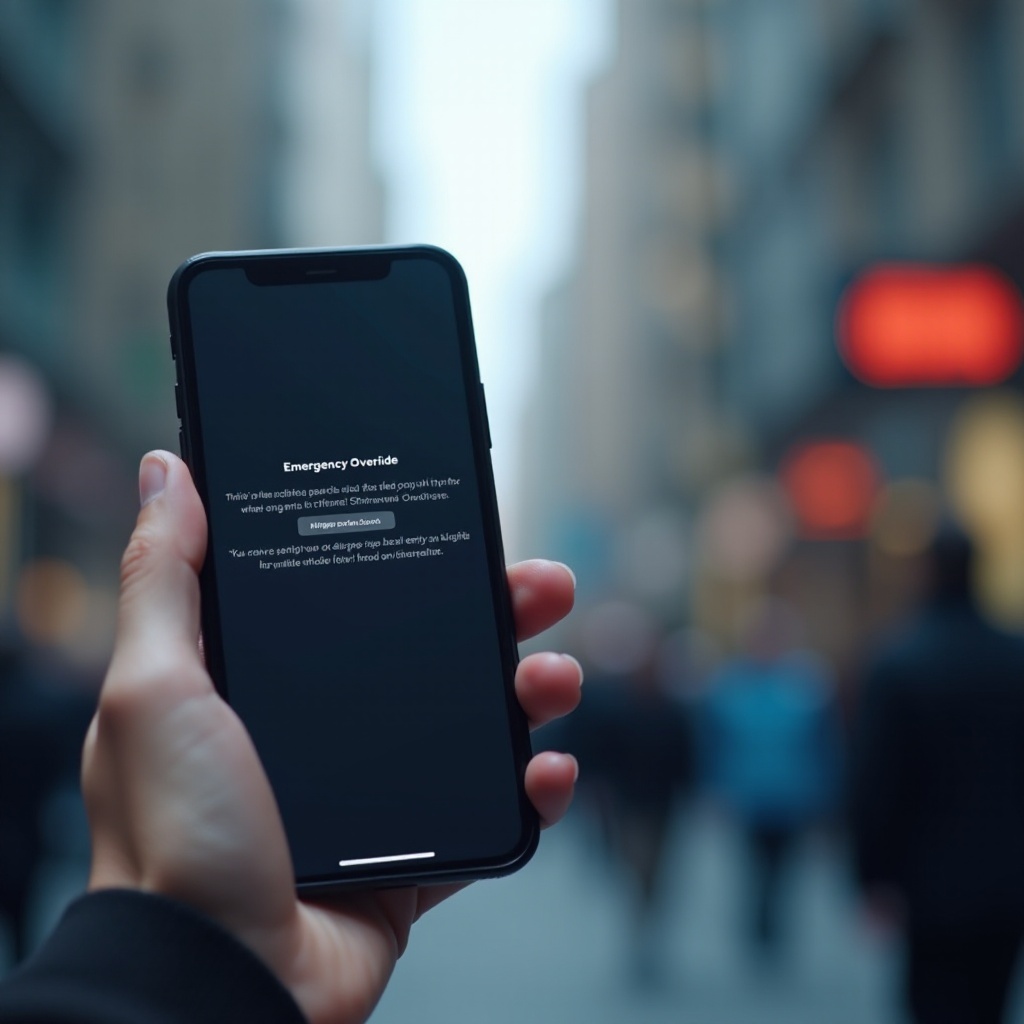Introduction
The emergency override function on smartphones can be a lifesaver in critical scenarios, yet it sparks curiosity and concern about its impact on devices. While this feature offers immediate access to communication and assistance during an emergency, users often wonder about the potential consequences for their phone’s performance and security. This guide demystifies the emergency override process, exploring its effects on various device components and offering guidance on when to activate this crucial feature.

Understanding Emergency Override on Your Smartphone
Smartphones are indispensable in modern life, and their functions extend beyond basic communication. Emergency override allows users to bypass the typical restrictions placed on a phone in low-battery situations. This feature prioritizes receiving calls, texts, or alerts, essential in emergencies. An integral part of both iOS and Android systems, emergency override is designed for rare, critical moments when communication is vital.
Understanding this function is crucial as it demonstrates how smartphones balance user needs against preservation of resources. By prioritizing emergency communication, phones temporarily forego energy-conserving measures, demonstrating technology’s role in safeguarding human welfare during urgent instances. Comprehension of the operational mechanics behind emergency override provides insights into its broader implications on daily device management.
How Emergency Override Affects Your Phone’s Battery and Performance
Activating emergency override impacts a phone’s battery life by temporarily lifting energy-saving features to ensure essential functionalities remain active. When engaged, your phone operates with less regard for battery conservation, focusing on maintaining a stable connection for communication at potential expense to battery longevity.
The performance of the device is also likely to be affected, as emergency override may bypass background process restrictions to facilitate functions such as location tracking for emergency services. While this does not generally cause permanent harm, prolonged or frequent use can lead to faster battery depletion or mild system lags due to the increased operational load.

Security Risks of Using Emergency Override
While emergency override is crucial for safety, it comes with potential security pitfalls. By suspending typical security protocols to prioritize crucial communication, devices may temporarily become more vulnerable to external threats. For instance, keeping location services active and allowing alerts to bypass ‘Do Not Disturb’ increase exposure to unwanted tracking or data usage.
Safeguarding digital security involves understanding vulnerabilities existing within emergency override protocols. Users should weigh the potential risks against the urgent communication benefits, activating this feature only when necessary, and ensuring subsequent reactivation of routine security settings minimizes exposure. Moreover, being cautious about where and when you use this feature can help mitigate potential risks.
When and Why You Should Use Emergency Override
Having explored the security concerns, it is important to identify scenarios where emergency override becomes indispensable. Emergency override serves an important purpose, especially during personal safety threats or critical health emergencies when immediate communication is imperative. Use this function when battery levels are critically low, but there is an urgent need for connectivity.
It’s also activated in scenarios where ensuring access to emergency alerts or geographical positioning services is critical. By grasping the situations that warrant its use, users can make informed decisions, balancing immediate communication needs with long-term device preservation and security.
How to Activate Emergency Override on Different Devices (iOS and Android)
The mechanics of activation are crucial to quick response times. Activating emergency override varies slightly between iOS and Android devices, but the core concept remains consistent: ensuring critical communication is maintained.
Activating on iOS Devices
- Access Settings: Go to your phone settings and open the ‘Battery’ menu.
- Toggle Emergency Override: If your device supports it, a toggle for emergency access may appear. Switch it on.
- Verify Activation: Ensure that it’s active by checking the status bar indicators, confirming that all essential notifications and alerts are allowed.
Activating on Android Devices
- Open Settings: Access the settings menu and select the ‘Battery’ option.
- Enable Emergency Override: This is commonly found under advanced battery settings or specific power saving options.
- Confirmation: Verify through the notification center or battery settings to ensure all emergency functions are prioritized.
Pros and Cons of Emergency Override
Understanding both sides of emergency override aids users in making informed decisions about its activation.
Pros:
- Ensures crucial communication when needed most.
- Displays alerts and notifications critical to safety.
- Activates location services to help emergency respondents.
Cons:
- Potentially drains battery more rapidly.
- Increases exposure to potential security threats.
- System performance might decline slightly during override activation.
Best Practices for Using Emergency Override Responsibly
Practicing responsible use of emergency override enhances device longevity and security. Ensure this feature is used strictly during necessary situations, limiting routine activation to preserve battery and maintain security. Regularly updating apps and system software ensures your device’s security measures remain robust, effectively mitigating the risks associated with occasional override use. In addition, educating others about responsible use can foster a community of tech-savvy, prepared individuals.
Conclusion
Emergency override remains essential in ensuring reliable phone performance under critical circumstances. Balancing its immediate benefits with mindful use ensures continued device security and functionality. Equipped with an understanding of risks and activation methods, users can make informed choices, efficiently incorporating this feature into their safety toolkit. Let the knowledge of when and how to use emergency override be a part of your smartphone management strategy for unforeseen situations.
Frequently Asked Questions
Does using emergency override damage my phone?
Frequent use may strain the battery over time, but when used sparingly, it should not cause significant long-term damage beyond normal wear.
Can emergency override affect my phone’s data security?
Yes, temporarily reducing security features can increase the risk of data exposure, but regular updates and cautious usage minimize such threats.
How often is it safe to use the emergency override feature?
Limit use to genuine emergencies to maintain battery health and security efficiency, ensuring that your device functions dependably when most needed.